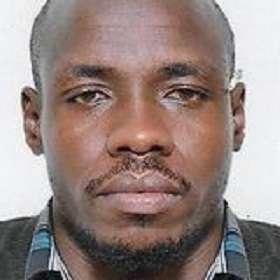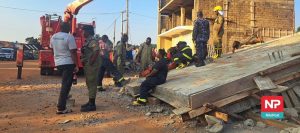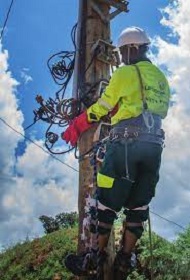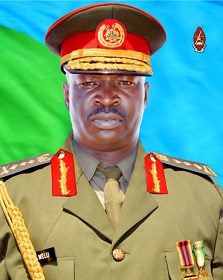
By Francis Otucu
Dear Editor: I read an interesting story in the media some weeks back. It was titled “Half of World’s population lacks access to safe drinking water – WHO”
Quoting the latest report by the World Health Organization (WHO), and an accompanying article published in a medical journal, The Lancet, the story said half of the world’s population does not have adequate access to safe drinking water, sanitation, and hygiene (WASH).
The report says the lack of access to safe drinking water resulted in at least 1.4 million deaths and 74 million disability-adjusted life years in 2019.
“With growing WASH-related health risks seen already today through conflicts, the emergence of antimicrobial resistance, the re-emergence of cholera hotspots, and the long-term threats from climate change, the imperative to invest is stronger than ever,” Dr. Maria Neira, Director, WHO Department of Environment, Climate Change, and Health, is quoted to have said. “We have seen improvements in WASH service levels over the last 10 years, but progress is uneven and insufficient”
The report attributes the deaths and disability adjusted life to unsafe drinking water, sanitation, and hygiene.
In Uganda, the Ministry of Water and Environment is mandated to develop, maintain and regulate the water and Environment resources in Uganda. Three Directorates – Environmental Affairs, Water Development and Water Resource Management Directorates – help the Ministry in achieving its mandate.
The Water Resources Institute, a response to the Ministry of Water and Environment reform study (2003 – 2005) that recommended the establishment of a Water Resources Institute to address current and emerging water resources related issues in the country, the Directorate controls and protects the water resources. The water resources are being protected by implementation of catchment based integrated water resources management activities through the four Water Management Zones.
In order to prevent further degradation of environment and to ensure reliability of water supply, the sector and its stakeholders are implementing a number of activities which include restoration of wetlands, demarcation of national forestry boundaries, tree planting in Central Forest Reserve and at community level, protection of river banks, and water source and catchment protection.
Other interventions are through the departments of Rural Water Supply and Sanitation, Urban Water Supply and Sanitation, Water Utility and Regulation, and Water for Production departments. But Urban Water specifically provides infrastructure for safe water supply and sewerage services in urban areas. Under Urban Water specifically, there are Umbrella Authorities which provide Operation and Maintenance support services for small water supply schemes. By August 2018, 434 schemes had been gazetted serving about 2.5 million people. 93% of which are functional. And 89% of water samples comply with drinking water quality standards.
Rural Water on the other hand, is charged with the provision of safe water and sanitation services in rural areas across the country. Under Rural Water, there are projects under Large Gravity Flow Schemes that traverse local government boundaries expected to connect 2, 000 households to safe water. An estimated 28.4 million (82%) of Ugandan’s population lives in the rural areas and depends on rural water and sanitation facilities. The main technologies of accessing safe water for the rural population is; deep boreholes (44%), shallow wells (23%), protected springs (21%) and 11% piped water schemes (gravity fed), piped water schemes (pumped), and rainwater harvesting tanks and others (1%).
The Natural Resources, Environment, Climate Change, Land and Water management (NRECCLWM) Programme is one of the 18 programmes of NDP3. It is responsible for sound management and sustainable utilization of natural resources, environment, land and water resources and mitigation of the impact of climate change for socio-economic development of Uganda. The programme, therefore, is central to realization of the NDP II goal of increased household incomes and improved quality of life of the population, set under the theme “Sustainable Industrialization for inclusive-growth, Employment and Wealth Creation.”
All the above directorates, departments and units contribute to the 2022 Programme Performance Report 2022 that indicates that 67% of the rural population are within one kilometer of access to an improved water source. The Performance Report further indicates that there has been increased resilience to climate change in terms of adaptation and mitigation for socio-economic development. It further shows that surface water abstraction compliance was 80.2%, while compliance of water supplies also improved. Overall, 77.2% of water samples collected from urban water supplies met the National Standards for Potable (Drinking) water quality.
More than ever before, the prudent and sustainable management of these resources has become an important aspect of nations as illustrated by Sustainable Development Goals (SDGs).
By June 2023, Uganda’s national water coverage for safe and clean water for human consumption stood at 70%, with 67% in rural areas and 72% in urban areas.
In rural areas, gravity flow schemes have been completed at Lirima in Manafwa, Lukalu-Kabasanda in Butambala and Nyabuhikye-Kikyenke in Ibanda. Piped water systems have also been constructed at Nyakabingo in Rukungiri, Kabuyanda in Isingiro, and Orom Water Supply System in Kitgum-Lamwo. In addition, 40 solar powered mini piped schemes serving 173,000 persons have been constructed across 15 least served districts including Lyantonde, Sembabule, Yumbe, Rakai, Buyende, Kamuli and Kakumiro.
In urban areas, 9 Piped Water Supply and Sanitation systems have been completed in Dokolo, Padibe – Lamwo, Odramacaku -Arua, Kagadi, Morulem and Alerek (Abim), and Kambuga II – Kanungu.
The government projects that access to safe and clean water will be enhanced to achieve 85% coverage in rural areas and 100% coverage in urban areas by the year 2025. Next year (2023/2024), the main activities towards this goal include: construction of 1,540 boreholes in 1,050 villages and town wards; building 49 large, 67 medium and 80 small piped water schemes in both urban and rural areas; and the rehabilitation and maintenance of 50 water systems in growth centers.
However, there is positive momentum as the government of Uganda aims to have safe water and improved sanitation for everyone by 2040. The Vision 2040 singles out water development as one of the opportunities that can foster socio-economic transformation.
In conclusion, therefore, with the national water coverage for safe and clean water for human consumption at 70% (67% in rural areas and 72% in urban areas), and the government’s plan to have safe and clean water enhanced to achieve 85% coverage in rural areas and 100% coverage in urban areas by the year 2025, Uganda is on a straight path to giving everyone safe and clean water by 2040.
The writer is a Student of Journalism and Communication at Makerere University, and an intern in the Communications Unit of the Ministry of Water and Environment.








